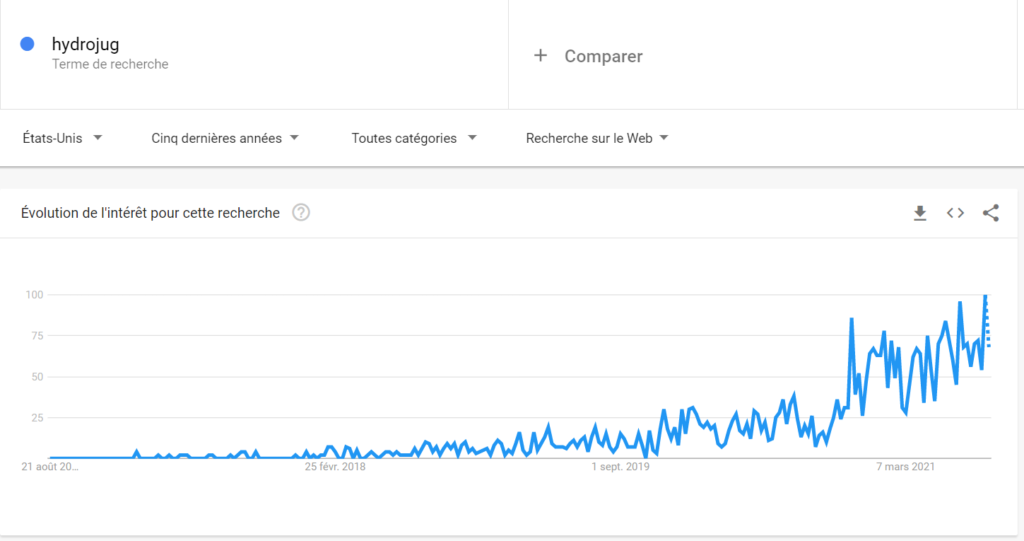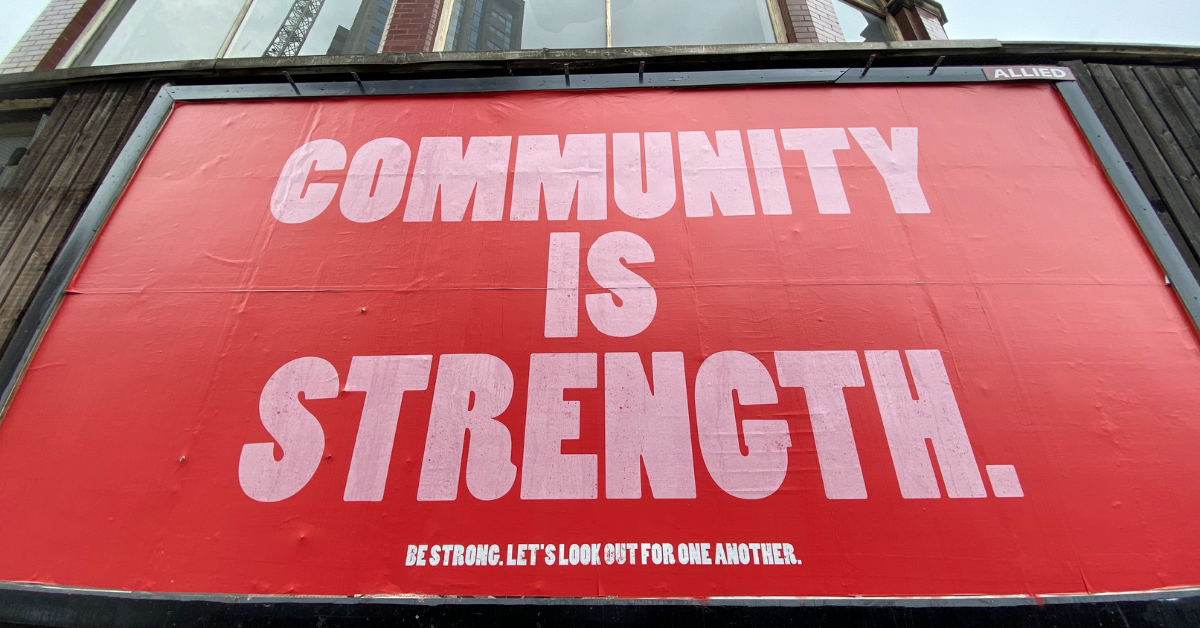Last updated on 07/13/2022
Why is building a strong community important for an e-commerce brand?
“Community is a group of people that care about each other and feel they belong together.” – Fabian Pfortmuller
It’s about filling that social hole for customers by creating a more human experience and building a relationship that goes beyond a simple transaction.
If you strive to raise awareness, educate and build trust with your target audience through content, shared values and stories, satisfied customers can become loyal fans who spread the word and help your brand grow.
Building an online community is a valuable marketing strategy. The brand with an online community giving it constant feedback to improve its product will have a significant advantage over other brands that rely only on consumer research.
If you create enough demand within your community, you will have a built-in fan base that is eager to buy every time you offer a new product or service.
● Free word of mouth
● More engagement
● More organic visibility on social media
● More sales
● Bigger customer LTV
“It is this phenomenon that is driving the D2C retail brands of today, as a brand of today is a community of fans first, and a producer of products later. The next generation of great brands seems to share this similarity. The likes of Glossier, Lululemon, Everlane and Tesla have developed incredibly strong communities of brand fans who find personal belonging in the core mission purpose and values of these brands. “
Paul Archer – Founder @Duel & Brand Advocacy Specialist
3 brands that have a strong online community
Gymshark
Gymshark is a UK-based fitness apparel brand valued at +$1bn in 2021.
They were early adopters of building an online community with influencers on Instagram back in 2012.
Their 3 main Instagram accounts have +9 Million followers in total.
Their strategy has been to invite fitness enthusiast influencers into their Gymshark Athlete community and then developed a larger family.
The concept of “community” is very present at Gymshark. The brand welcomes visitors into its family as soon as they sign up for the newsletter or purchase a product.
On their social media pages, Gymshark does not try to sell directly to their followers with direct promotions. The brand focuses on motivational and educational content that simply showcases athletes in Gymshark gear.
Glossier
Emily Weiss founded Glossier in 2014, which is now worth $1.8 billion after completing an $80 million Series E round in July 2021. The brand started with a community built around a blog long before they launched any products.
Their Instagram account has 2.7 million followers and their Into The Gloss facebook group has 21k members.
On social media, Glossier employees engage directly with customers often from their personal accounts, and are encouraged to communicate with the group’s fans.
Glossier has also invited the brand’s top influencers to join their Slack chat group for direct feedback on recent launches and for direct involvement in the product development process.
For its fans, the brand has created affiliate links to encourage them to create content. Brand loyal fans are invited to create their own pages on the Glossier website, which they can share a URL link to their friends and embed in their own social media posts. If someone clicks on the link and purchases an item, Glossier pays them a commission on the sale.
Hydrojug

Hydrojug created in 2017 by 2 brothers in the USA, produces and sells reusable water bottles with built-in straws and large capacity. Their average number of interactions per post on Instagram is 3,033 likes 680 comments with 350k followers on IG and 116k on Facebook.
They have a Facebook group HydroJugFam with an average of 40 posts per day for 3.5K members.
A fan group on Facebook has created a community of fans called HydroJugAddicts of 5.3k members with 120 posts per day.
Each new product launch has massive engagement with a strong community.
Thanks to their members they were able to fund a kickstarter campaign extremely quickly surpassing their initial goal of $10,000 and reached +$100 000.
Characteristics of a strong community for an e-commerce brand:
● Communicate to share vision, mission and value
● Understand your audience better than anyone
● Super Fans who express themselves and will support your brand
How to build a strong community?
Build a brand identity
The brand’s story and mission must be clearly defined and expressed. Your members want to know your story and what you do every day as a company to make the world a better place.
Today’s digital natives are looking for personification and stories. They want to know the history of a product and the stories behind the brand founders.
Members feel part of a project with a vision bigger than the product itself.
Example: https://www.warbyparker.com/history
“Warby Parker was founded with a rebellious spirit and a lofty objective: to offer designer eyewear at a revolutionary price, while leading the way for socially conscious businesses.” – Warby Parker Website
Positioning itself as the alternative to the expensive, oligopolized eyewear industry, Warby Parker doesn’t just sell quality glass frames and sunglasses. They invite customers to be part of the brand movement.
Understand target audience
Understanding your audience is essential. Many entrepreneurs make the mistake of thinking that their customers are like them. This bias is natural because most successful entrepreneurs are passionate about what they do and have strong beliefs about the value of their products.
However, a brand’s target audience and community members may have different issues from each other. They may want different things and even disagree with each other. It’s up to you to understand them and bring them solutions through your brand and they will thank you.
Example: https://www.beardbrand.com/
“After analyzing the results of a survey they launched, a big part of their community members consider traveling as one of their biggest passions. To serve them better, Beardbrand decided to launch small and travel-friendly products specifically made to optimize the experience of their customers while they are traveling”
ERIC BANDHOLZ
Authority in your industry
Don’t take the word “authority” literally. Authority in marketing means bringing forward the know-how of the brand. For example with traditional PR, or a Youtube channel, you can impose your authority in your market by presenting yourself as an expert. Or reinforce your company’s authority by sharing your knowledge through blog posts.
Some communities appreciate this authority and feel valued to be part of it.
KOLs (Key Opinion Leaders) can also act as a proof of authority when the content is not sponsored.
Example: https://intothegloss.com/
Glossier has built its authority through its blog. Positioning itself as an expert brand in its industry and addressing existing issues that were not covered by brands in the market in 2014.
User-generated content
User-generated content is defined as any type of content created and distributed by customers. This can include photos, videos, testimonials, reviews, tweets and blog posts. It is the promotion of a brand by users rather than the brand itself.
This content is increasingly used by brands because it is valued by members.
Beware though, community members are increasingly able to differentiate authentic content from content created by an actor.
Many brands use actors or sponsored digital content creators to create this kind of content.
Don’t put it out there that it’s a customer if it’s not.
Influencers are a way to generate this type of content as well, as they have authority over their audiences, and many are willing to speak honestly about your products or provide complete reviews if they are legit. Some niches like beauty and fashion have many influencers who can generate content as experts.
If it’s sponsored, it’s best to make it clear so you don’t fool users. Your members will recognize if it is authentic and may also want to do it as well.
Example: https://www.instagram.com/lushcosmetics/
Lush Cosmetics puts a lot of emphasis on product photos of their customers on Instagram.
“A large part of Lush’s content strategy is to elevate other voices, including our customers. One simple way to do this is through UGC.” Laura Cranfield, Social Media Manager, Lush Cosmetics North America.
Role of the community manager
The community manager is essential to the success of your community.
All of your efforts to build a strong online community can come to be wasted if you don’t have a community manager.
If you don’t moderate the group properly, members can be offended by other members, leave and have a tarnished perspective of your brand.
If members don’t feel like they are getting the value they were promised when they joined the community, they will leave.
If members are inundated with notifications, they will put your community on silent mode and forget about it.
The right community manager will balance this out. He’s like the director of operations for your community. His job is to make sure that the behind-the-scenes operations run smoothly so that members feel like everything is going well.
Promote the community
Partnering with influencers
Like Gymshark and Glossier, to promote your community and develop a strong community feeling, you can partner with influencers to reach their audience and through the influencer who is a human, go recruit new members for your tribe who adhere to your vision, mission, and values.
Referral program
Referral programs reward members who refer people to your community. Your rewards can be a free product, a discount code, a prize (like a new smartphone), etc.
Celebrate with your community members
Feature them in a case study, offer them a month’s worth of free products, send them a t-shirt, or write an article expressing your gratitude for being part of the community.
Engage
If they post and tag your brand on social media, ask them if you can reuse their content and post it on your IG feed by tagging them. If they tag you on their Instagram stories, share their story on your account. If they tag you in a comment, reply.
Measure the success of your community.
Keep in mind that the goal is to invest in a strong online community that will support your brand voice and a sustainable brand asset.
Nevertheless, you need to measure it with metrics.
Sign-up rate, engagement rate, click-through rate and conversion rate are essential to evaluate the growth and performance of the community of your initial goals. If you’re not getting the conversions you want, it’s time to test new strategies within your community.
Sources:
https://www.fastcompany.com/90644446/16-ways-to-build-a-strong-community-around-your-brand
René Algesheimer, Sharad Borle, Utpal M. Dholakia, Siddharth S. Singh
The Impact of Customer Community Participation on Customer Behaviors: An Empirical Investigation. Marketing Science 29 (4) 756-769 https://doi.org/10.1287/mksc.1090.0555
https://www.optimonk.com/marketing-breakdown-how-gymshark-bulked-up-to-being-a-1-billion-brand/

It’s really a great and helpful piece of info. I am glad that you shared this useful information with us. Please keep us up to date like this. Thanks for sharing.
Hello! I’ve been reading your website for a while now and finally got the bravery to go ahead and give you a shout out from Porter Tx! Just wanted to say keep up the good job!
Hi There,
Thank you so much for your comment! If you have any question feel free to ask 🙂